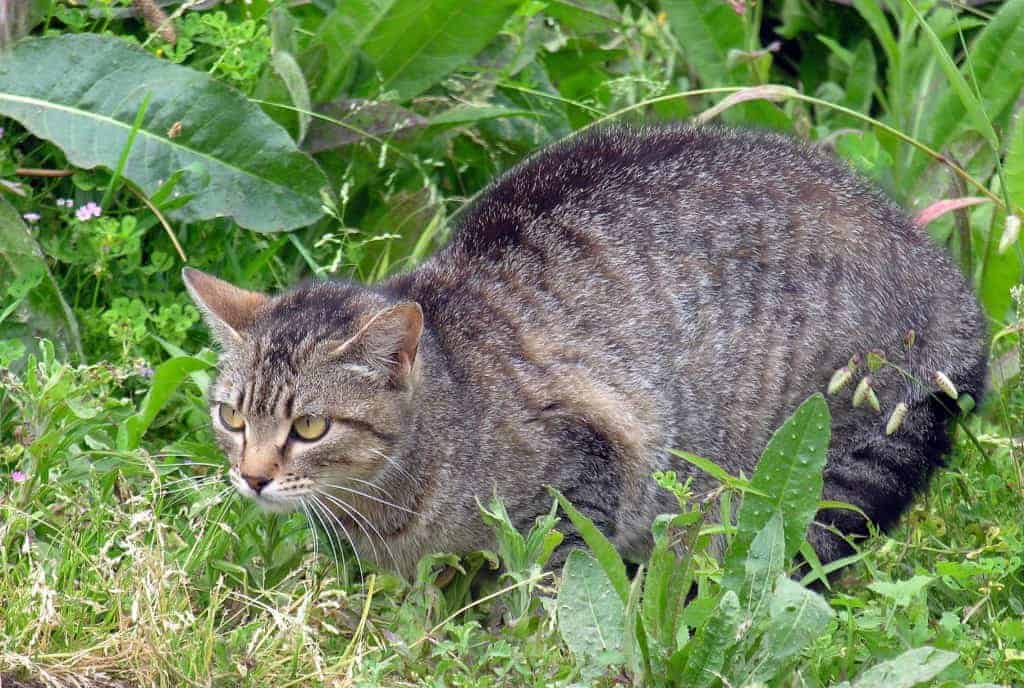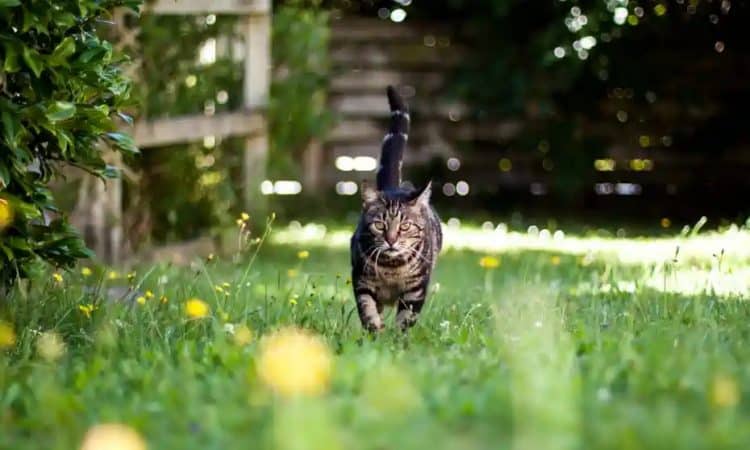Feral cats are cats who have had little or no significant contact with humans. These cats are used to fending for themselves and don’t do well as an indoor pet cat.
Many cat lovers have turned to Trap-Neuter-Return programs (also known as TNR) to handle the feral cats in their communities.
There may already be TNR programs running near you. However, not everyone is thrilled with TNR.

What is TNR?
The idea behind a Trap-Neuter-Return program is to control the population of feral cats and allow feral cats to get necessary care while remaining feral. Ideally, feral cats would be taken care of by the community that they live in- provided with suitable food, water, and shelter. Volunteers would humanely trap the cats and bring them to the veterinarian to:
- Be spayed or neutered
- Given proper vaccinations
- Receive and ear tip – removal of a part of the left ear (this doesn’t hurt the cat) to notify other members of the public that the cat has been spayed or neutered.
Once the veterinary procedures have been finished, all socialized cats and feral kittens (under 12 weeks old) would be placed up for adoption. All feral cats would be returned to the community from which they were trapped and continue to live outdoors. Sickly cats would be treated as their illness required.
What is the debate really about?
Both sides of the TNR argument agree that there is an overpopulation of feral cats. They also agree that spaying and neutering cats is essential to stabilizing the cat population. The real debate lies in the following questions:
- Whose responsibility is the care of feral cats?
- Can feral cats live happy, healthy lives outdoors?
- Can feral cats live in harmony with humans and the other species living around them?
- What do we do with cats who are not socialized enough to be adopted into homes?
The Argument Against TNR
Generally, groups like The Wildlife Society and American Bird Conservancy (who oppose TNR) believe that TNR does not actually decrease the feral cat population. It is more of a warm fuzzy idea that doesn’t work out well in reality.
They also state that it costs far less money euthanize the unadoptable feral cats than it does to spay/neuter them and care for them as ferals. These are the answers I believe groups that are against TNR would give to the above questions .
- Feral cats are ultimately the responsibility of humane organizations and animal control groups. It is their job to look out for the welfare of these animals, and if need be, euthanize them.
- Feral cats cannot live happy, healthy lives. You can’t tell people that they should keep their pet cats indoors to keep them healthy and free of disease, then say that feral cats are fine out there. Contagious illnesses like Rabies, FIV, and FeLV are spreading rapidly among feral cats causing suffering and death. These cats are also at high risk for being hit by cars or harmed by bad people.
- Feral cats do not live in harmony with humans and other species around them. They are a nuisance and health threat to humans (possibly carrying rabies and parasites). The growing feral cat population has also caused a dangerous decline in the bird population.
- If a cat is not adoptable, then it should be euthanized. This is a more humane treatment than allowing them to go back out onto the streets where they can suffer from disease and malice. Cats need to be kept indoors only.
The Argument For TNR
Those who support TNR like The Alley Cat Allies and The Neighborhood Cats, believe that feral cats deserve to continue to inhabit this earth with us. They emphasize that what animal control groups call “euthanizing” a feral cat is really just “killing” the feral cat because there is no medical reason for ending the cat’s life. I believe that the proponents of TNR would answer the debate questions as follows:
- Feral cats are the responsibility of the people in the community that they live in. Members of the community should volunteer to carry out the different parts of the TNR program.
- Feral cats can and do lead happy, healthy lives outdoors. Having them spayed or neutered increases their quality of life. No longer worried about reproduction, they have less stress and fight less often. Feral cats have been known to live 7 years or more.
- Feral cats have no problem living in harmony with the humans and other species around them – especially after being spayed or neutered. It is humans that have a hard time living with other species. Yes, there are populations of birds and other species declining, but it is due to human activity.
- If a cat is not socialized enough to be adopted, it should be spayed or neutered, then returned to it’s natural habitat to live as it pleases.
We invite you to give your opinion whether the overpopulation of feral cats should be managed through TNR programs. Please vote and also leave your comments at the bottom of this page.
This article was first published by PlayfulKitty.net on 02 June 2014.






Leave a Reply